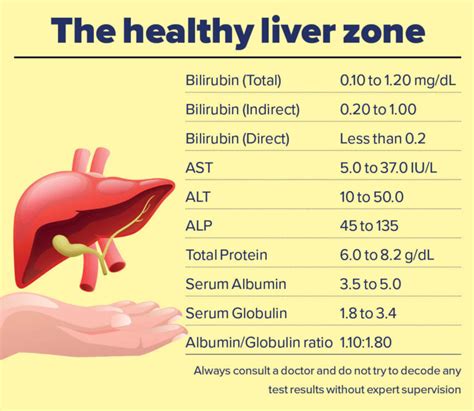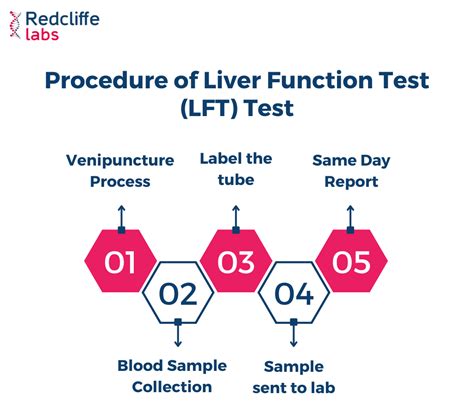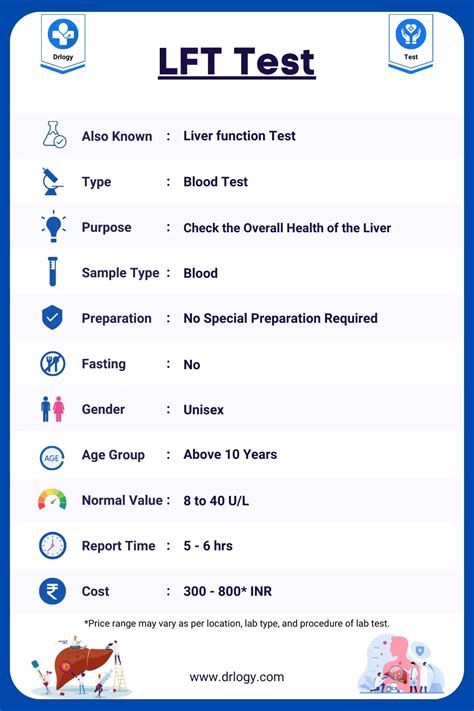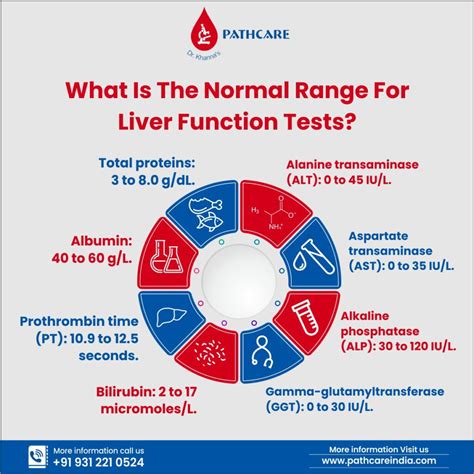Intro
Discover the Liver Function Test (LFT) basics, including liver enzymes, bilirubin, and protein levels, to understand liver health and diagnose conditions like hepatitis and cirrhosis.
The Liver Function Test (LFT) is a crucial diagnostic tool used to assess the health and functioning of the liver. It is a series of blood tests that measure various enzymes, proteins, and other substances produced or cleared by the liver. These tests help healthcare professionals diagnose and monitor liver diseases, such as hepatitis, cirrhosis, and liver cancer. The LFT is also used to evaluate the effectiveness of treatments and to monitor the progression of liver disease.
The liver plays a vital role in maintaining overall health, and any abnormalities in liver function can have significant consequences. The LFT is an essential test for individuals who are at risk of liver disease, such as those with a family history of liver disease, heavy drinkers, or people who have been exposed to hepatitis viruses. Additionally, the LFT is often used to monitor patients who are taking medications that can affect the liver, such as statins or certain antibiotics.
The liver is responsible for many critical functions, including detoxification, protein synthesis, and the production of bile. It also plays a key role in regulating blood sugar levels, storing glycogen, and metabolizing fats. When the liver is damaged or diseased, these functions can be impaired, leading to a range of symptoms and health problems. The LFT helps healthcare professionals identify liver damage or disease early on, allowing for prompt treatment and intervention.
What Does the LFT Test Measure?

The LFT test measures various substances in the blood, including enzymes, proteins, and bilirubin. The most common tests included in the LFT panel are:
- Alanine transaminase (ALT)
- Aspartate transaminase (AST)
- Alkaline phosphatase (ALP)
- Gamma-glutamyl transferase (GGT)
- Bilirubin
- Albumin
- Prothrombin time (PT)
Each of these tests provides valuable information about liver function and can help diagnose liver disease. For example, elevated levels of ALT and AST can indicate liver damage or inflammation, while high levels of ALP and GGT can suggest bile duct obstruction or liver cancer.
ALT and AST: What Do They Measure?
ALT and AST are enzymes found in liver cells. When the liver is damaged, these enzymes are released into the bloodstream, causing levels to rise. Elevated ALT and AST levels can indicate liver damage or disease, such as hepatitis or cirrhosis. However, it's essential to note that mildly elevated levels can also occur due to other factors, such as muscle damage or strenuous exercise.How Is the LFT Test Performed?

The LFT test is a simple blood test that can be performed in a healthcare provider's office or laboratory. A healthcare professional will insert a needle into a vein, usually in the arm, and collect a blood sample. The sample is then sent to a laboratory for analysis. The test results are typically available within a few hours or days, depending on the laboratory and the specific tests ordered.
The LFT test is usually performed in the morning, after an overnight fast. This ensures that the test results are accurate and not influenced by food or other substances. It's essential to follow the healthcare provider's instructions carefully and to ask any questions or concerns before the test.
Preparation and Aftercare
Before the LFT test, it's essential to:- Fast for at least 8 hours
- Avoid eating fatty foods or alcohol
- Inform the healthcare provider about any medications or supplements being taken
- Avoid strenuous exercise or physical activity
After the test, the healthcare provider may provide instructions on how to care for the puncture site and what to expect in terms of results and follow-up.
What Do the Results Mean?

The LFT test results can indicate a range of conditions, from normal liver function to liver damage or disease. The results are typically reported as follows:
- Normal: The liver is functioning normally, and no abnormalities are detected.
- Elevated: One or more liver enzymes or substances are elevated, indicating potential liver damage or disease.
- Abnormal: The test results indicate liver disease or damage, and further testing or evaluation may be necessary.
It's essential to discuss the test results with a healthcare provider, as they can provide a detailed interpretation and recommend further testing or treatment if necessary.
Common Abnormalities and What They Mean
Some common abnormalities detected by the LFT test include:- Elevated ALT and AST: Indicates liver damage or inflammation
- Elevated ALP and GGT: Suggests bile duct obstruction or liver cancer
- High bilirubin: Indicates jaundice or liver dysfunction
- Low albumin: Suggests liver disease or malnutrition
- Prolonged PT: Indicates coagulation disorders or liver disease
These abnormalities can have significant implications for health, and it's essential to seek medical attention if any concerns or symptoms arise.
What to Expect After the Test

After the LFT test, the healthcare provider may recommend further testing or evaluation to confirm the diagnosis or to monitor liver function. This may include:
- Imaging tests, such as ultrasound or CT scans
- Liver biopsy
- Additional blood tests
- Medications or treatments to manage liver disease
It's essential to follow the healthcare provider's instructions carefully and to attend any follow-up appointments as scheduled.
Monitoring and Follow-up
Regular monitoring and follow-up are crucial for managing liver disease and preventing complications. The healthcare provider may recommend regular LFT tests to monitor liver function and adjust treatment as necessary.Additionally, individuals with liver disease should:
- Avoid alcohol and substances that can harm the liver
- Maintain a healthy diet and lifestyle
- Stay hydrated and manage stress
- Attend regular follow-up appointments with the healthcare provider
By working closely with a healthcare provider and following their recommendations, individuals with liver disease can manage their condition effectively and reduce the risk of complications.
FAQs

What is the purpose of the LFT test?
+The LFT test is used to assess liver function and diagnose liver disease.
What does the LFT test measure?
+The LFT test measures various substances in the blood, including enzymes, proteins, and bilirubin.
How is the LFT test performed?
+The LFT test is a simple blood test that can be performed in a healthcare provider's office or laboratory.
In conclusion, the LFT test is a vital diagnostic tool for assessing liver function and diagnosing liver disease. By understanding what the test measures, how it is performed, and what the results mean, individuals can take an active role in managing their liver health. If you have any concerns or questions about the LFT test or liver disease, don't hesitate to reach out to a healthcare provider. Share this article with others who may benefit from this information, and let's work together to promote liver health and awareness.
